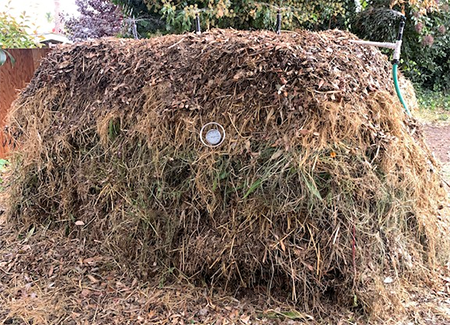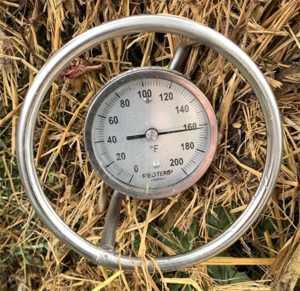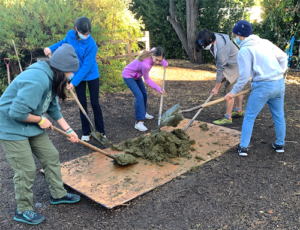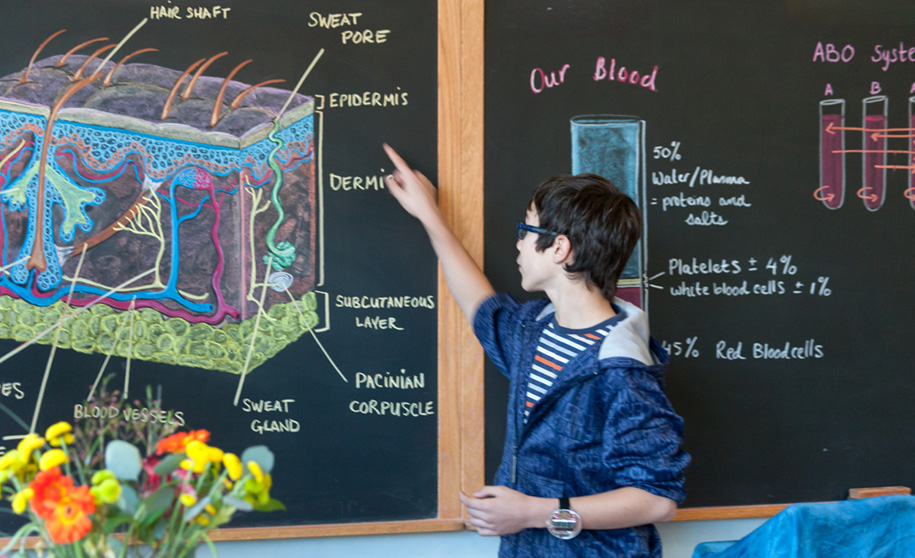
The Garden Gate: Acorns, Frosts, and Composts
by by Phil Dwyer | Earth Arts Teacher
Many crows gather early every morning under a large oak where I live. They take advantage of the cars squishing the acorns that fall in the residential parking lot and driveway. A number of gray and black squirrels busily scurry around the trees’ bounty, too. Similar acorn enthused activity is taking place on our Mountain View campus among its oak trees in the middle school courtyard. Deciduous trees are shedding their leaves. Plants are generally withdrawing from their outward spring and summer growth, as if retreating back into the Earth. We’ve had our first frosts in the garden, which seem to herald that the formative, crystalline forces will rule for the months to come, rather than the curvy biomorphic forms of the dynamic growth forces of the warmer months.
Many biodynamic (BD) farmers capitalize on the shift of energies into the earth during this time of year. Compost yards fill up with new piles of biomass to ferment and transform over the winter. The digesting activity of blooms of countless microorganisms (trillions per “handful” of now steaming biomass) heat up the compost heaps.
Pictured above is a recently created “fresh” compost pile of several cubic yards of biomass (approximately 10’x5’x5’), which will probably yield a couple of yards of finished compost.
 As if to confirm the legitimacy of the compost thermometer, many students often thrust their hands into the compost heap to feel it for themselves. (We always wash our hands after every gardening class.) They can attest that things are heating up even though the days are getting cooler. In the Spring, wheelbarrows of transformed compost humus will return to the school’s garden beds to enliven our clay soils and join with the plants in their dance of photosynthesizing the sun.
As if to confirm the legitimacy of the compost thermometer, many students often thrust their hands into the compost heap to feel it for themselves. (We always wash our hands after every gardening class.) They can attest that things are heating up even though the days are getting cooler. In the Spring, wheelbarrows of transformed compost humus will return to the school’s garden beds to enliven our clay soils and join with the plants in their dance of photosynthesizing the sun.
Many BD farms craft a specialized compost made from cow manure. Students are pictured here taking turns “stirring” fresh manure and mixing it with pulverized egg shells, rock mineral dusts, and diatomaceous earth. It all got buried in a brick-lined pit where the five BD compost preparations—made from chamomile, yarrow, dandelion, nettle, oak bark, and valerian—were added. When this all eventually turns to humus it will become a unique compost concentrate, which will be an incredible catalytic aid for the formative and growth forces of the living realm of our campus. We eagerly look forward to putting it to good use!
concentrate, which will be an incredible catalytic aid for the formative and growth forces of the living realm of our campus. We eagerly look forward to putting it to good use!

